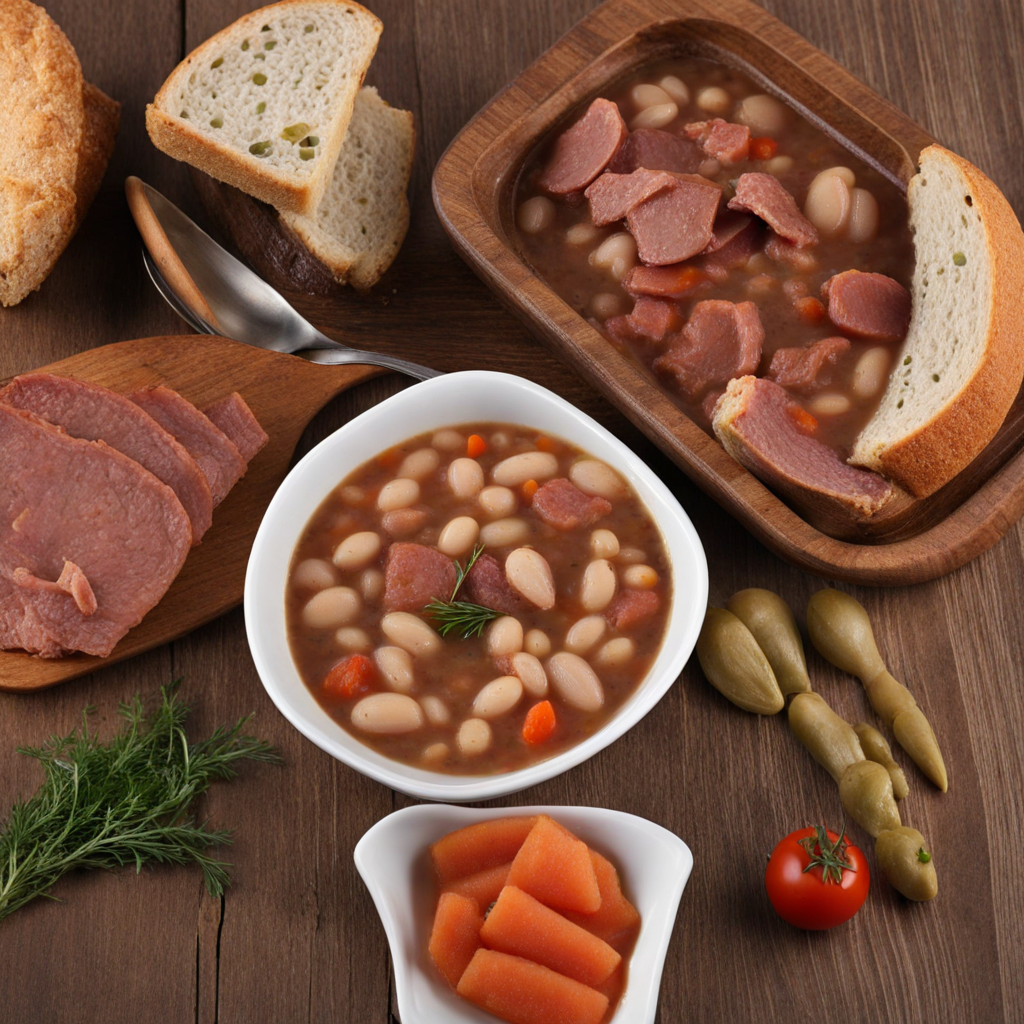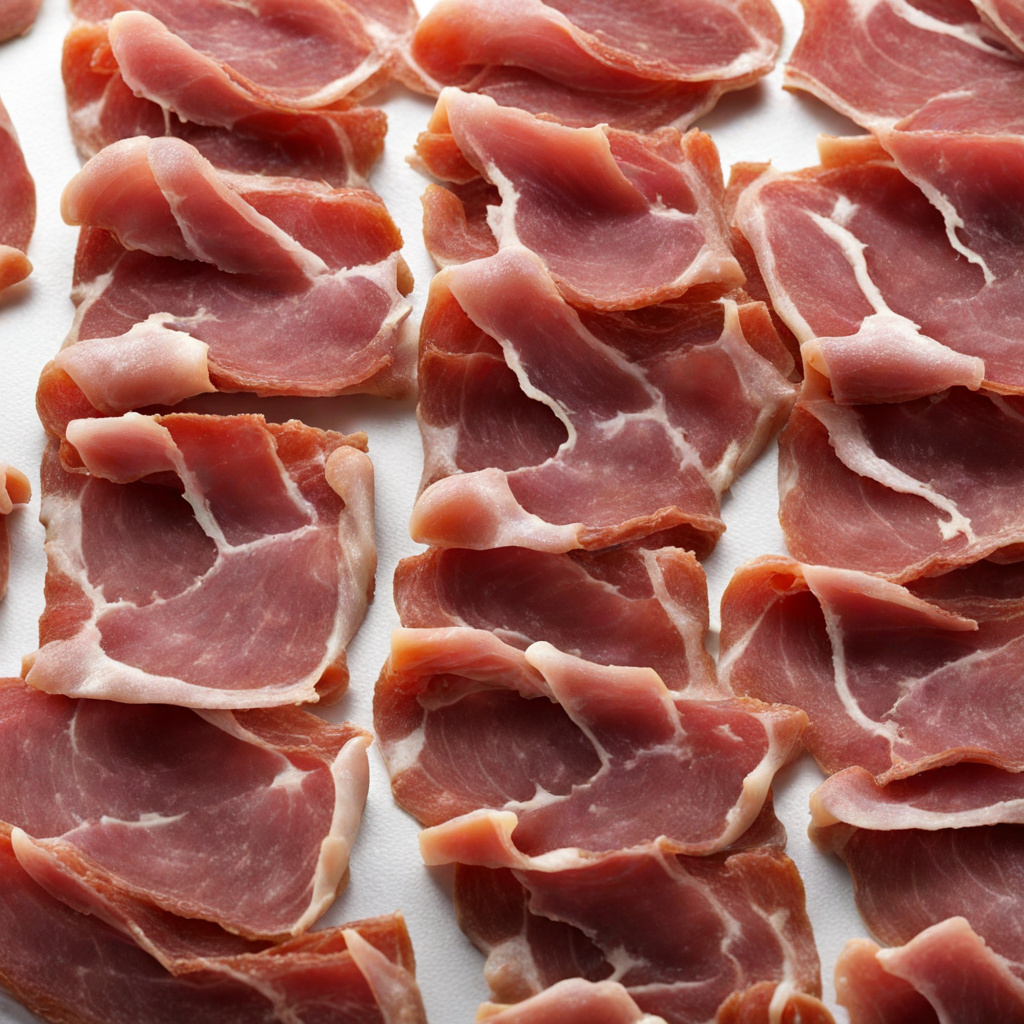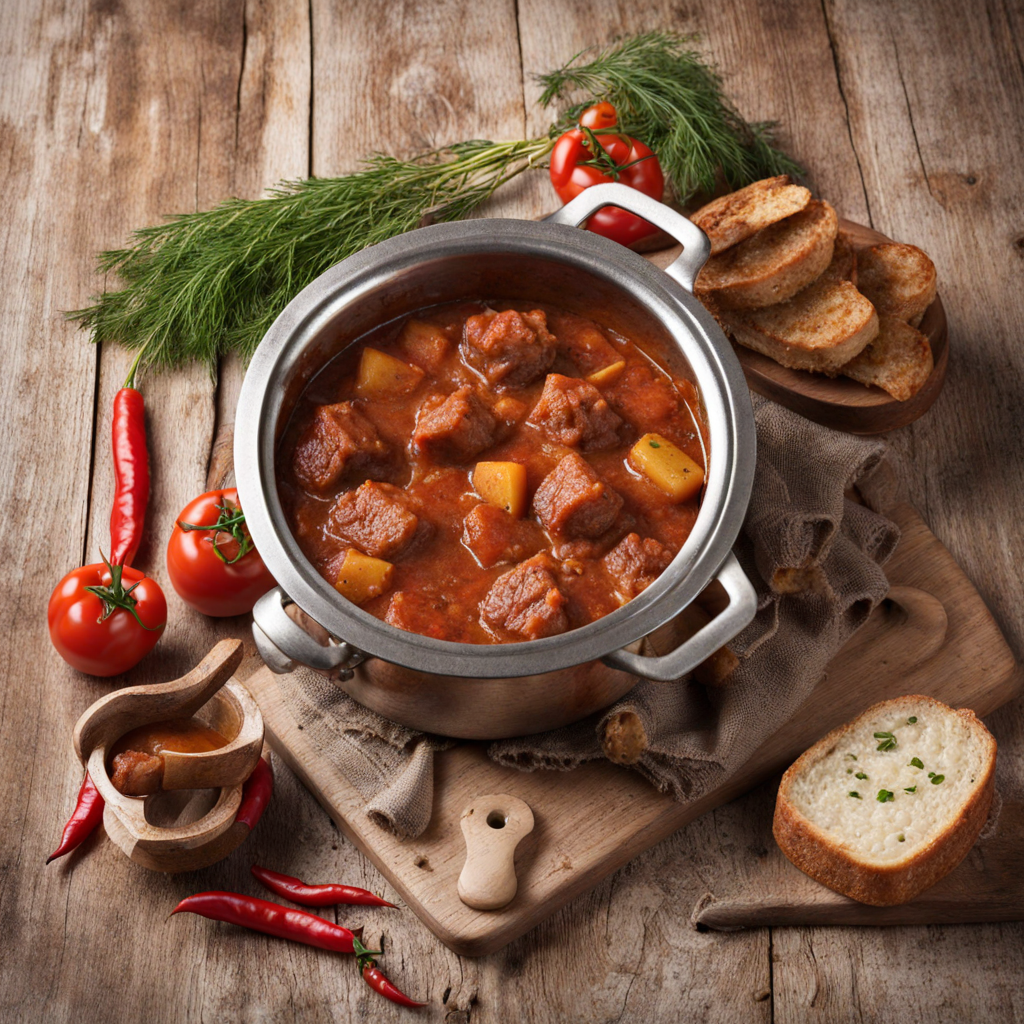Pršut
Pršut is a traditional Croatian dry-cured ham that embodies the rich culinary heritage of the country. This delicacy is typically made from the hind leg of pigs, which are carefully selected for their quality. The process of making Pršut involves salting the meat and then air-drying it under the gentle breezes of the Mediterranean climate, often in regions like Dalmatia or Istria. The result is a beautifully marbled ham that boasts a deep, savory flavor, with a hint of sweetness and a delightful nuttiness, thanks to the natural aging process that can last for several months to even years. When you take your first bite of Pršut, you'll notice its silky texture that melts in your mouth, paired with a complex profile that reflects the herbs and spices used during its curing. Each region in Croatia has its unique take on Pršut, influenced by local traditions and the specific environmental conditions. The ham is typically sliced thinly, allowing its rich flavors to shine, and it often serves as a centerpiece for charcuterie boards or as a flavorful addition to salads and sandwiches. Pršut is not just a dish but a cultural experience, often enjoyed alongside local cheeses, olives, and a glass of Croatian wine. Its versatility makes it a delightful accompaniment to various meals or a standalone snack. Whether you are dining at a rustic konoba (tavern) or enjoying it at a family gathering, Pršut provides a taste of Croatia's rural traditions and a connection to the land and its people, making it a must-try for anyone looking to explore new culinary horizons.
How It Became This Dish
The History of Pršut: Croatia's Cured Treasure #### Origin and Early Beginnings Pršut, a dry-cured ham, has deep roots in Croatian culinary traditions, particularly in the regions of Dalmatia and Istria. Its origins can be traced back to ancient times, with evidence suggesting that the practice of curing meat was common among the Romans and earlier civilizations in the Mediterranean. The word 'pršut' itself derives from the Latin term 'perexsuctus,' which means 'to dry thoroughly.' This etymology highlights the method used in preparing this delicacy, involving a meticulous process of salting and air-drying. The unique climate and geography of the Croatian coastline—characterized by its mild Mediterranean weather, abundant sea breezes, and fertile lands—provided ideal conditions for the production of high-quality cured meats. The traditional methods of making pršut were passed down through generations, often evolving within local communities, each adding its own nuances and techniques to the process. #### Cultural Significance Pršut is more than just a food item; it embodies the rich cultural heritage of Croatia. It is often associated with family gatherings, celebrations, and traditional feasts, symbolizing hospitality and the importance of sharing food in Croatian culture. Pršut is typically served thinly sliced as an appetizer, often accompanied by olives, local cheeses, and a glass of Croatian wine or rakija (fruit brandy). It is a staple on charcuterie boards and a crucial part of festive occasions, reflecting the significance of cured meats in Croatian culinary identity. The social aspect of sharing pršut is further emphasized in traditional Croatian customs. During significant life events, such as weddings or christenings, pršut is often featured prominently on tables, showcasing the host's generosity and connection to local traditions. The act of slicing and serving pršut is an art form in itself, and skilled artisans take pride in their craft, elevating the experience of enjoying this cured ham. #### The Development of Pršut Over Time Over the centuries, pršut has undergone various transformations, influenced by regional ingredients, climatic conditions, and evolving culinary practices. The production of pršut is a labor-intensive process that typically involves several stages: selection of high-quality pork, salting, drying, and aging. The best cuts are usually taken from the hind leg of the pig, known for its rich flavor and tenderness. In the early days, pršut was primarily made in rural households as a means of preserving meat for the winter months. Families would raise their own pigs, and the curing process was essential for sustaining them through the cold seasons when fresh meat was scarce. The art of making pršut was often a communal effort, with neighbors sharing techniques and resources, reinforcing community bonds. By the 20th century, the production of pršut began to evolve with the advent of industrialization and globalization. While many traditional producers maintained their artisanal practices, the demand for pršut increased, leading to a rise in commercial production. However, this also introduced challenges, such as the risk of compromising quality for quantity. In response to this trend, a movement to preserve traditional methods and standards emerged, culminating in the establishment of quality labels and certifications. In 2007, Croatian pršut received Protected Geographical Indication (PGI) status from the European Union, similar to the protections afforded to other renowned European cured meats like Parma ham and Iberico jamón. This status ensures that only ham produced in specific regions of Croatia, adhering to traditional methods, can be labeled as 'Pršut.' #### Regional Variations Croatia is home to several types of pršut, each with its distinct characteristics that reflect the local environment and culinary traditions. The most renowned is Pršut from Dalmatia, particularly from the coastal town of Drniš and the island of Brač. This variety is known for its sweet, delicate flavor and is typically aged for a minimum of 12 months. The curing process involves the use of sea salt, and the hams are often dried in the windy conditions of the Adriatic coast. In contrast, Istrian pršut offers a different flavor profile, influenced by the region's unique climate and culinary traditions. Istrian producers often incorporate local herbs and spices, such as garlic and bay leaves, into the curing process. The result is a ham that is slightly spicier and more aromatic than its Dalmatian counterpart. Each region has its own festivals dedicated to celebrating pršut, where local producers showcase their products, and visitors can sample various types of cured meats. These events play a vital role in preserving regional identities and promoting local craftsmanship. #### Modern-Day Relevance and Global Recognition Today, pršut has gained international recognition, celebrated not only within Croatia but also in gourmet circles worldwide. Chefs and food enthusiasts appreciate pršut for its versatility and depth of flavor, incorporating it into a variety of dishes, from pasta to salads. As the global interest in artisanal and traditional foods grows, pršut has found its place in the gourmet food market, with specialty shops and restaurants highlighting its unique qualities. In recent years, there has been a resurgence of interest in sustainable and ethical food production. Many consumers are turning to locally sourced and traditionally made products, leading to a renewed appreciation for pršut as a representation of Croatia’s culinary heritage. The emphasis on slow food movements and farm-to-table dining has also contributed to pršut’s popularity, as it embodies the principles of quality, locality, and tradition. #### Conclusion Pršut stands as a testament to Croatia’s rich cultural and culinary heritage. From its ancient origins to its modern-day significance, pršut represents more than just a delicious cured meat; it is a symbol of community, tradition, and the enduring connection between people and their food. As the world continues to explore and celebrate diverse culinary practices, pršut remains a proud ambassador of Croatian culture, inviting all to savor its unique flavors and stories. Whether enjoyed in a rustic konoba (tavern) or at a fine dining restaurant, pršut continues to captivate palates and hearts alike, ensuring its place in the tapestry of global gastronomy for generations to come.
You may like
Discover local flavors from Croatia







